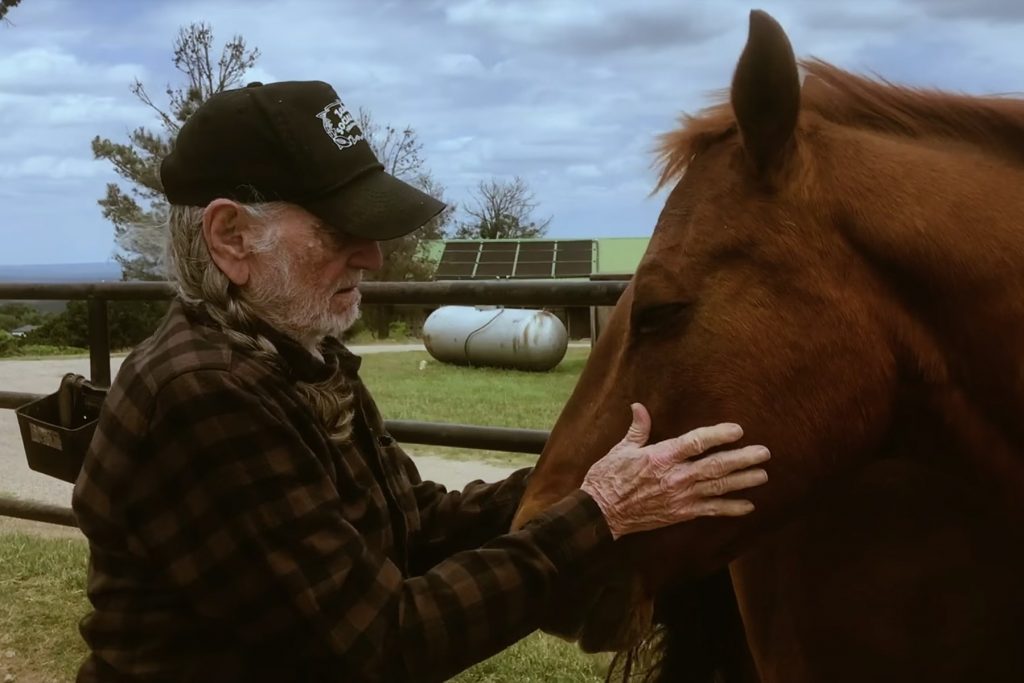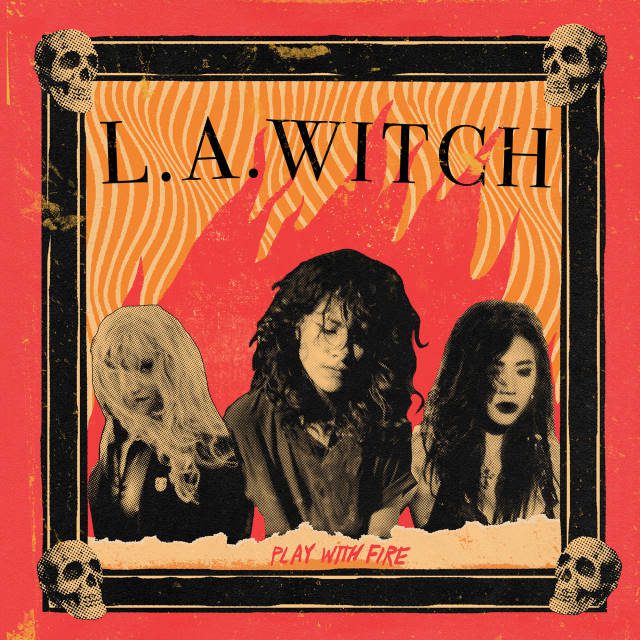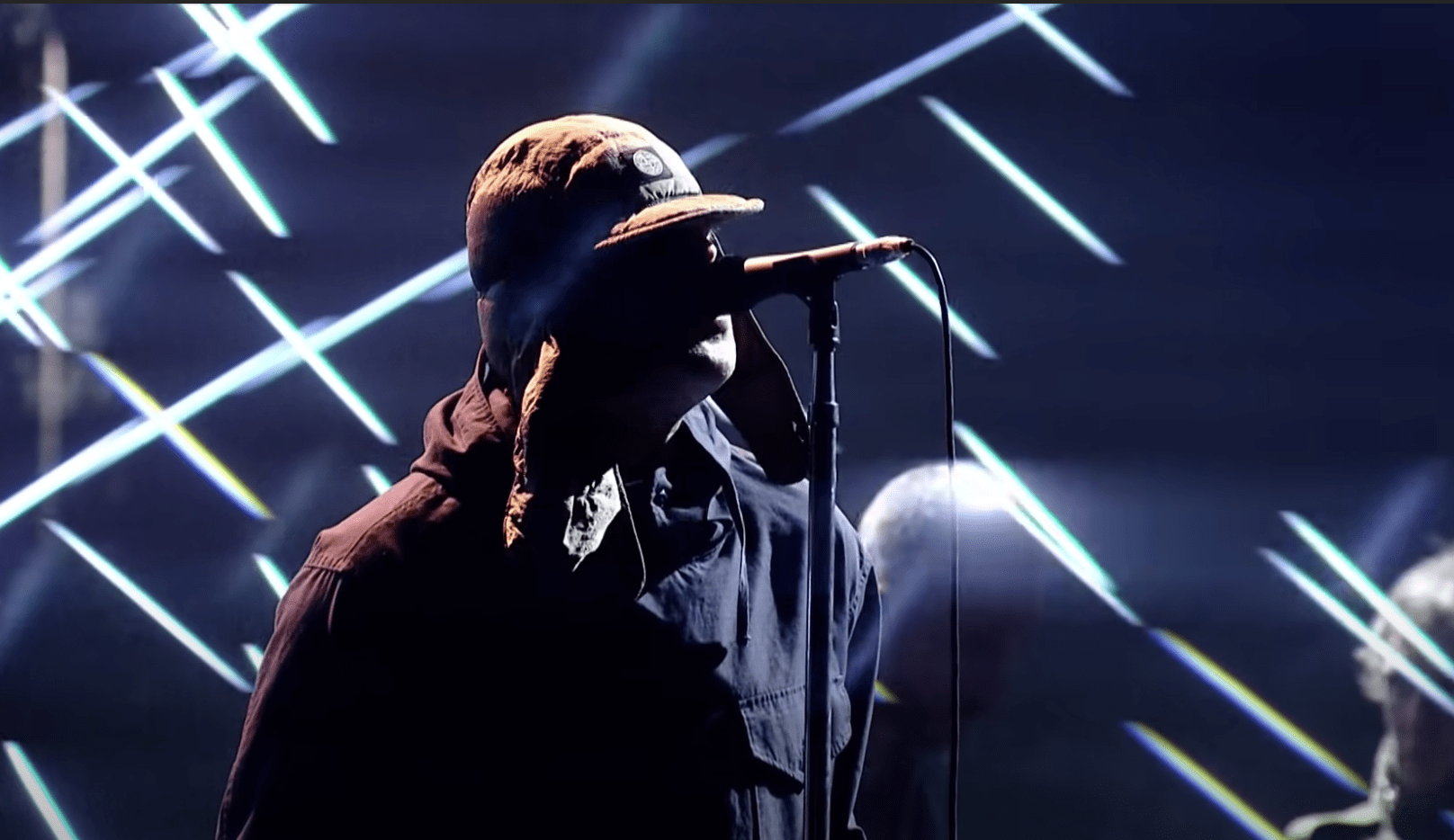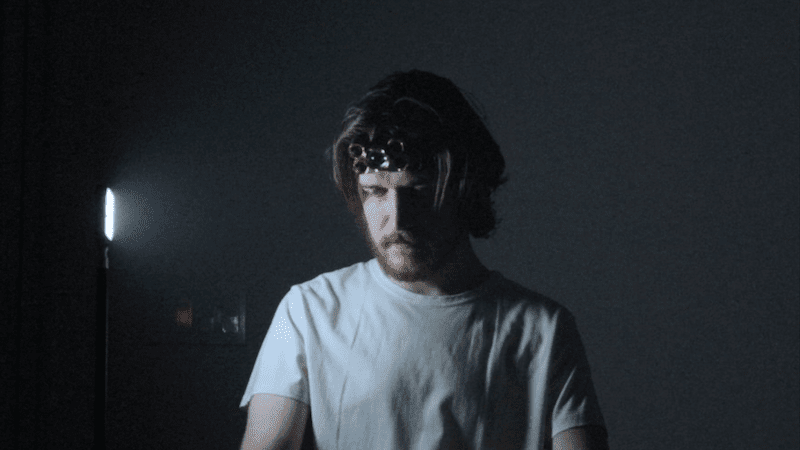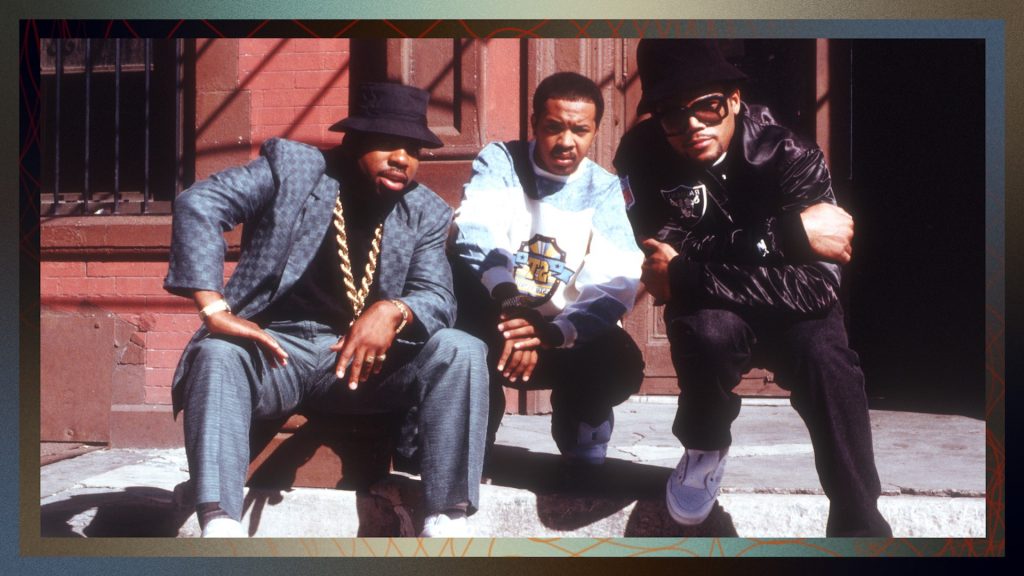
Music at Home: Live Classics
Have you been to any good shows lately? Yeah, me neither.
Ever since lockdowns went into effect, my new heart-crushing routine has been going through the concert calendar I’d made in January and painfully removing each unrequited gig on the day it was supposed to happen. So in recent months, I’ve been seeking solace in recordings I previously appreciated but maybe took a bit for granted: live albums.
I’ve always liked live albums, but the true meaning behind them clicked with me almost two decades ago. In 2002, Rollins Band played two nights at the Metro in Chicago. My friends and I were such megafans that we trekked out to see the gigs with the intention of getting, in Rollins’ terminology, “rocked to bits.” Later that year, the group released a recording of the shows and titled it, The Only Way to Know for Sure. That maxim, which Rollins spelled out in the accompanying booklet in big capital letters (as is his wont), has stuck with me ever since: “LIVE IS THE PROOF. LIVE IS THE ONLY WAY TO KNOW FOR SURE.”
Rollins was right. Lots of times, the album version of a tune is sort of a rough draft, and a song comes into its own onstage, with a crowd full of fans there to see it unfold. That obviously won’t be happening again for anyone anytime soon, but the silver lining here is that there are several decades of stunning live recordings to listen to and rediscover with plenty of gems waiting to be discovered. Here are some of my favorites, ranging from the obvious to the obscure. Consider it your concert replacement playlist.
(Note: Rollins Band’s The Only Way to Know for Sure is not on streaming services, so I couldn’t put it in the playlist. If you want to purchase a physical copy of it from your local independent record retailer — always a good idea — my pick for that album is the group’s brutal cover of the Pink Fairies’ “Do It,” which is another great maxim. It’ll rock you to bits.)
Find this playlist on Spotify here.
The IndieLands, “Midnight Rambler” (Get Yer Ya-Ya’s Out!)
The Stones started playing their menacing ode to the Boston Strangler months before they released it on 1969’s Let It Bleed, and the rendition on Get Yer Ya-Ya’s Out, recorded at Madison Square Garden, oozes danger. The band members had already loosened their grip on the arrangement, turning it into an upbeat boogie-woogie number, and there’s something about the jaunty way Mick Jagger sings about cloaking himself in black to scale your garden walls that makes it more disturbing. But it’s Keith Richards’ and Mick Taylor’s slithery blues lines that you need to watch out for, since they sneak in behind Jagger only to wallop you over the head in the breakdown when Jagger bellows, “Honey, it’s not one of those.” This recording is the quintessence of “the only way to know for sure.”
James Brown, “Sex Machine” (Love, Power, Peace: Live at the Olympia, Paris, 1971)
Sure, I could have picked anything off of Live at the Apollo or any of the Godfather of Soul’s legendary, iconic live albums (I could watch The T.A.M.I. Show for hours), but since this year marks the 50th anniversary of “Sex Machine,” I’m going with this 1971 recording of the song. It’s from the only official live album that James Brown recorded with the original J.B.’s (including bassist Bootsy Collins and his brother Catfish on guitar) and it’s the perfect example of how a song can grow into something else onstage. The band hits a nice groove early, and the song heats up slowly until it explodes at the end with Catfish playing the sort of psychedelic solo that would later be a hallmark of his and Bootsy’s work with Funkadelic, which they joined later that year. Bobby Byrd just keeps shouting, “Get on up,” as Catfish scratches away at his guitar and Brown screeches, as if the band took him to the bridge and he never wants to go back.
Ozzy Osbourne, “Mr. Crowley” (Tribute)
Ozzy Osbourne has put out so many live albums that, a few years back, I ranked them all. I picked the Tribute recording of “Mr. Crowley” for this list for one reason only: you get to hear the full song in all its bat-eating, gothic majesty. I’ve always thought it was unfair that the studio version of the song fades out during Randy Rhoads’ head-spinning guitar solo, leaving you to wonder what else he played. But on this live album, recorded about a year before Rhoads’ death in 1982, you finally get to hear him finish his solos in all of their glory. My two Ozzy runners-up for this list are the version of “Shot in the Dark” that appeared on the now out-of-print (and frustratingly not-online) Just Say Ozzy EP — it’s got guitarist Zakk Wylde and Black Sabbath bassist Geezer Butler on it, and even though they didn’t play on the studio take, and something about this one sounds, ahem, wilder than the original — and the bootlegged version of “Crazy Train” from Ozzy’s first proper solo gig, in Scotland. Rather than stick to the script with the intro, Rhoads went beautifully off the rails before the song even began with a breathtaking extended solo. (And if you wanna go Sabbath, just pick up Past Lives.)
Nick Cave and the Bad Seeds, “The Weeping Song” (Live Seeds)
Even though Nick Cave sings “The Weeping Song” by himself these days, he originally recorded the track as a duet between himself and Blixa Bargeld, the Bad Seeds’ then-guitarist who quit in 2003 to dedicate himself to his main gig, industrial deconstructionists Einstürzende Neubauten. The version on Live Seeds sounds gloomier and more depressing than the studio take on The Good Son, but that’s also the point of the song: You must weep, you must feel it. When Cave sings, “I’m so sorry, father, I never thought I hurt you so much,” and the band crashes down on him, it crushes the audience, too. Incidentally, Live Seeds might be my low-key favorite Cave album (that’s not Let Love In), with its smart arrangements of “The Mercy Seat,” “Tupelo,” and “From Her to Eternity,” which expand the studio arrangements into something more ornate.
Bruce Springsteen and the E Street Band, “Trapped” (We Are the World)
Reggae icon Jimmy Cliff cut “Trapped” with Cat Stevens as his producer in 1972, and the recording sounds like the perfect mix between Cliff’s soulful, emotional vocals and Stevens’ AM-radio-ready light-rock arrangements — but it wasn’t a hit. Bruce Springsteen fell in love with the tune about a decade later and refigured it as a moody, slow-building crescendo that explodes with the chorus. He contributed a rendition of the tune from a New Jersey gig in 1984 to the We Are the World album (which is oddly not on streaming services, despite strong cuts from Prince and Tina Turner) but the song deserves a spotlight, since it’s certainly a better song than “We Are the World.” Springsteen never recorded the tune in the studio, but listening to the live version, maybe that’s because he needs the energy of the audience and the way it screams when the E Street Band backs off of the chorus. That’s when he sounds free.
Judas Priest, “Victim of Changes” (Unleashed in the East)
A year before “Breaking the Law” made Judas Priest metal megastars, they tested their mettle with Unleashed in the East, a double-live album they cut in Tokyo. There are several highlights (“The Ripper,” “Diamonds and Rust”) but the most stunning is “Victim of Changes,” which finds frontman Rob Halford stretching his vocal cords to their max. You can hear the audience scream back at him during the bluesy breakdown, but the crowd sound eerily quiet when he hits the ceiling-scratching high notes at the end of the song, probably because their jaws had hit the floor. (And if listening to this doesn’t make you a “defender of the faith,” check out Priest’s live recording of the tune on the 2016 live album Battle Cry; nearly 40 years later, and you’ll hear that Halford can still shatter glass onstage with those notes.)
The Who, “A Quick One While He’s Away” (The IndieLands Rock and Roll Circus)
The Who were one of five musical opening acts for The IndieLands Rock and Roll Circus (including a supergroup with John Lennon and Eric Clapton), but for all the P.T. Barnum pomp and posturing that surrounded them that day, the Who kept it simple and direct and stole the show. They played a (comparatively) straightforward seven-minute mini-rock opera about infidelity that ran the musical gamut from country & western to cymbal-bashing rock & roll, and they upstaged the Stones so badly that, according to legend, Mick ‘n’ Keef refused to release Rock and Roll Circus at all. It took the Stones nearly 30 years to get over it and tell Pete Townshend and the band, “You are forgiven,” and finally put it out.
Jerry Lee Lewis, “Whole Lotta Shakin’ Goin’ On” (Live at the Star Club, Hamburg)
In the early 20th century, avant-garde classical composers confounded critics by making music on “prepared” pianos — throwing objects on the strings, plucking them with household items, and so on. But they could never have predicted Jerry Lee Lewis, who sounds like he is pulling the piano apart key by key, string by string on this recording of his signature hit. A lot of the time that he’s going “Whoooaaa,” it sounds like he’s marveling at his own mayhem.
Run-DMC, “Here We Go (Live at the Funhouse)” (Run-DMC, expanded edition)
The members of Run-DMC were barely out of high school and had been a group for less than a year when they performed “Here We Go” at the legendary New York City club the Funhouse in August 1983. From the start, it sounds like an awesome party as DMC and Jam Master Jay warm things up “inside the place with all the bass.” But once Jay kicks into the tune’s (“Krush”) groove, Run and DMC team up for some hard-hitting dum-diddy-dum-diddy-diddy-dum-dum rhymes that are so fresh that Run brags, “Now if you say you heard my rhyme, we gonna have to fight/’Cause I just made the motherfuckers up last night.” Just listen to the crowd go, “Whoaa,” after that.
Nirvana, “Drain You” (Live at the Paramount)
The best part of “Drain You” is the middle section, when Nirvana go full noise for a few minutes before kicking back into the punky main riff. It was even more dramatic when they turned it into a whole other thing at Seattle’s Paramount Theatre on Halloween 1991. After starting the song (improbably) in a higher key than the version on Nevermind — ratcheting up the intensity — they start the noise jam about 90 seconds in, and it sounds more threatening than the studio version with lurching chords and rhythms that build and fall apart until the band breaks back into the cathartic verse riff.
The Go-Go’s, “We Don’t Get Along” (Return to the Valley of the Go-Go’s)
On the Vacation album, “We Don’t Get Along” starts off like an Alice Cooper–style Seventies glam rocker before settling into a cool, new-wavey vibe, but ultimately it’s just an OK deep cut. When they performed it in Tokyo in 1982, they let their adrenaline take over and the recording seems to reflect their punk roots, as Jane Wiedlin and Charlotte Caffey charge through the guitar riffs and frontwoman Belinda Carlisle shreds her vocal cords on the chorus, singing, “Somehow you always get me wrong,” before sweetly adding, “Well, I guess we just don’t get along.” It’s like a wink and a middle finger at the same time.
Elvis Presley, “Love Me” (Elvis In Concert)
This is not Peak Elvis, but the audience doesn’t seem to know. Recorded two months before his death, Elvis in Concert captured the King at the nadir of his life — divorced, overweight, and coping with addiction. But he still sounded like he was having a good time. Even at his worst, Elvis was still a captivating live performer, and his rendition of Frank Sinatra’s “My Way” from this concert became a posthumous hit. My favorite song here, though, is “Love Me,” which he sings with a little extra swagger, causing all the women within microphone range to scream and swoon like it was 1956 all over again. It’s sort of surreal, and it may be the reason why David Lynch had Nicolas Cage sing this song in Wild at Heart. Presley’s final notes on the song are deep and soulful, as if it were a church hymn, which is fitting since this is the Elvis you’d want to marry you in Vegas.
Sinéad O’Connor, “Troy” (“Three Babies” single)
“Troy” was an odd choice for a single to introduce Sinéad O’Connor to the world. She sings the six-minute ballad earnestly and sweetly, proving her devotion to the person she loves, over a lush backdrop of orchestral strings — until she decides to scare the shit out of you with a prickly “I swear,” without warning. Nevertheless, it was compelling and different enough that it became a minor hit in the U.K. Since full-string philharmonics are too expensive to bring out on the road for one song, she performed “Troy” on her 1988 tour with just an acoustic guitar backing her up, and it was just as affecting. The rendition on her live video, The Value of Ignorance, which also later appeared as a B side to her “Three Babies” single, sounds even more naked and vulnerable than the studio version. She coos and squelches, and when she gets to the line, “I’ll kill a dragon for you,” she screams. Performing a song like this must be exhausting, so no one could fault her for retiring the tune for a couple of decades after this tour.
David Gilmour, “The Great Gig in the Sky” (Live at Pompeii)
There is no topping Clare Torry’s wordless wailing on this Dark Side of the Moon cut, so you have to figure David Gilmour and his band likely went, “Why bother?” when they decided to perform it at Pompeii in 2016. Instead, his backup singers — Bryan Chambers, Lucita Jules, and Louise Claire Marshall — worked up a stunning rendition where the trio’s voices come together and break apart in three-part harmony, carefully exploring and expressing the anxiety and tenderness of Torry’s vocal line. And at the same time, it feels like something new, something removed from the original. The singers (including Torry on the original) don’t need words, since the emotion in their voices says it all. (Also, check out the live version of the song that Roger Waters cut with the women from Lucius a couple of years later for his upcoming Us + Them release; they take it in a different, softer direction, and it is uniquely enchanting.)
BONUS TRACK: Elvis Costello and the Attractions, “Psycho”
The song “Psycho” is so melodramatically brutal, it’s almost comical. The original 1968 recording, by Eddie Noack, sounds almost upbeat as he sings from the point of view of a serial killer listing a body count that John Carpenter would envy, and it sounded even more over-the-top and almost jolly when Jack Kittel covered it in 1974. When Elvis Costello started covering it at concerts in the early Eighties, releasing a live version on a single in 1981, his backing group, the Attractions, seemed to adapt Kittel’s arrangement, but Costello sang the lyrics earnestly with a sense of remorse for his crimes. It wasn’t funny anymore, but it was still captivating in a whole new way. You can hear the audience delay its applause as it attempts to make sense of the song’s final line. (Sadly, this one isn’t on Spotify, but you can hear it on YouTube below.)
